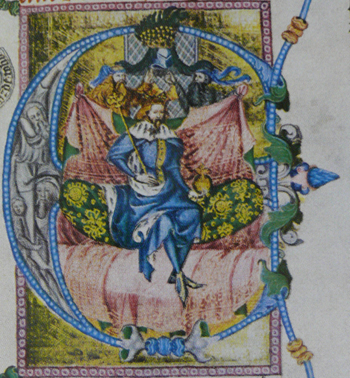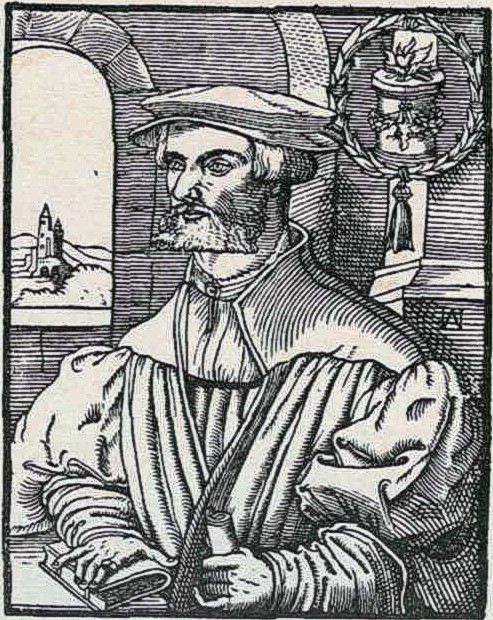|
Rupert, Count Of Nassau-Sonnenberg
Rupert, Count of Nassau-Sonnenberg ( – 4 September 1390), nicknamed ''the Bellicose'', was a son of Gerlach I, Count of Nassau and his second wife, Irmgard of Hohenlohe. Life As a younger son, Rupert was originally destined for a career in the clergy. Gerlach I abdicated in 1344, in favour of his sons, except he kept Sonnenberg Castle, where he lived. This castle was to be inherited by Kraft, Rupert's eldest brother. However, Kraft fell in battle while fighting on the French side in the Battle of Poitiers in 1356. It was then decided that Rupert would inherit Sonnenberg. Rupert's half-brother from his father's first marriage ruled their father's possessions jointly until 1355, and then divided it: * Adolph I, Count of Nassau-Wiesbaden-Idstein, Adolph I inherited Nassau-Wiesbaden-Idstein (this line died out in the male line in 1605) * John I of Nassau-Weilburg, John I inherited Nassau-Weilburg (this line died out in the male line in 1912) * Rupert later inherited Nassau- ... [...More Info...] [...Related Items...] OR: [Wikipedia] [Google] [Baidu] |
House Of Nassau
The House of Nassau is the name of a European aristocratic dynasty. The name originated with a lordship associated with Nassau Castle, which is located in what is now Nassau, Rhineland-Palatinate, Nassau in Rhineland-Palatinate, Germany. With the fall of the Hohenstaufen dynasty in the first half of the 13th century, royal power within Franconia evaporated and the former stem duchy fragmented into separate independent states. Nassau emerged as one of those independent states as part of the Holy Roman Empire. The lords of Nassau were originally titled "Counts of Nassau", subject only to the Holy Roman Emperor, Emperor, and then elevated to princely rank as "Princely Counts". Early on, the family divided into two main branches – the elder (Walramian) branch, which gave rise to the German king Adolf, King of the Romans, Adolf, and the younger (Ottonian) branch, which gave rise to the Prince of Orange, Princes of Orange and the King of the Netherlands, monarchs of the Netherlands. ... [...More Info...] [...Related Items...] OR: [Wikipedia] [Google] [Baidu] |
Landgraviate Of Hesse
The Landgraviate of Hesse () was a principality of the Holy Roman Empire. It existed as a single entity from 1264 to 1567, when it was divided among the sons of Philip I, Landgrave of Hesse. History In the early Middle Ages, the territory of Hessengau, named after the Germanic Chatti tribes, formed the northern part of the German stem duchy of Franconia, along with the adjacent Lahngau. Upon the extinction of the ducal Conradines, these Rhenish Franconian counties were gradually acquired by Landgrave Louis I of Thuringia and his successors. After the War of the Thuringian Succession upon the death of Landgrave Henry Raspe in 1247, his niece Duchess Sophia of Brabant secured the Hessian possessions for her minor son Henry the Child. In 1264 he became the first Landgrave of Hesse and the founder of the House of Hesse. The remaining Thuringian landgraviate fell to the Wettin's Henry III, Margrave of Meissen. Henry I of Hesse was raised to the status of prince by King Adolf ... [...More Info...] [...Related Items...] OR: [Wikipedia] [Google] [Baidu] |
14th-century Births
The 14th century lasted from 1 January 1301 (represented by the Roman numerals MCCCI) to 31 December 1400 (MCD). It is estimated that the century witnessed the death of more than 45 million lives from political and natural disasters in both Europe and the Mongol Empire. West Africa experienced economic growth and prosperity. In Europe, the Black Death claimed 25 million lives wiping out one third of the European population while the Kingdom of England and the Kingdom of France fought in the protracted Hundred Years' War after the death of King Charles IV of France led to a claim to the French throne by King Edward III of England. This period is considered the height of chivalry and marks the beginning of strong separate identities for both England and France as well as the foundation of the Italian Renaissance and the Ottoman Empire. In Asia, Tamerlane (Timur), established the Timurid Empire, history's third largest empire to have been ever established by a single conquero ... [...More Info...] [...Related Items...] OR: [Wikipedia] [Google] [Baidu] |
Counts Of Nassau
Count (feminine: countess) is a historical title of nobility in certain European countries, varying in relative status, generally of middling rank in the hierarchy of nobility. Pine, L. G. ''Titles: How the King Became His Majesty''. New York: Barnes & Noble, 1992. p. 73. . Especially in earlier medieval periods the term often implied not only a certain status, but also that the ''count'' had specific responsibilities or offices. The etymologically related English term "county" denoted the territories associated with some countships, but not all. The title of ''count'' is typically not used in England or English-speaking countries, and the term ''earl'' is used instead. A female holder of the title is still referred to as a ''countess'', however. Origin of the term The word ''count'' came into English from the French ', itself from Latin '—in its accusative form ''comitem''. It meant "companion" or "attendant", and as a title it indicated that someone was delegated to re ... [...More Info...] [...Related Items...] OR: [Wikipedia] [Google] [Baidu] |
Diether VIII, Count Of Katzenelnbogen
Diether VIII, Count of Katzenelnbogen (1340 - 19 February 1402) was a Count from the younger line of the House of Katzenelnbogen. He ruled in Upper Katzenelnbogen. In 1376 he took part in the coronation of King Wenceslaus IV of Bohemia, as King of Germany. Diether was the son of Johann II of Katzenelnbogen (died 2 March 1357) and Elizabeth of Isenburg-Limburg. Diether was married on 8 June 1361 to Elisabeth of Nassau-Wiesbaden-Idstein (died 1 February 1389), a daughter of Adolph I, Count of Nassau-Wiesbaden-Idstein, Adolph I of Nassau-Wiesbaden (1307-1370). They had the following children: * Johann IV, Count of Katzenelnbogen, Johann IV, married 1385 Anna von Katzenelnbogen from the older line of Katzenelnbogen * Elizabeth (died 1393), married 1387 Count Henry IV of Veldenz * Margaret (died 1438), married 1385 John II of Isenburg-Büdingen In 1391 Diether married the widow of Count Rupert, Count of Nassau-Sonnenberg, Rupert of Nassau-Sonnenberg (died 1390), Anna von Nassau-Hadama ... [...More Info...] [...Related Items...] OR: [Wikipedia] [Google] [Baidu] |
Philipp I Of Nassau-Weilburg
Count Philipp I of Nassau-Weilburg (1368 – 2 July 1429) was Count of Nassau in Weilburg, Count of Saarbrücken and Seigneur of Commercy ''Château bas'' in 1371–1429. Biography Philipp was a son of John I, Count of Nassau-Weilburg (1309 – 1371) and Johanna, Countess of Saarbrücken (d. 1381), daughter of John II, Count of Saarbrücken (d. 1381). Philipp inherited the County of Nassau-Weilburg from his father in 1371 and the County of Saarbrücken from his mother 1381. For the first ten years, his mother was the regent in his place, then bishop Friedrich of Blankenheim was the regent until his majority. Philipp married twice and had several children, and his first wife Anna brought some territories in Trier that were added to his realm. At Philipps death in 1429, the counties were ruled jointly by his eldest sons, with their mother Elisabeth as regent until 1442, then it was divided between them, Philipp getting Nassau-Weilburg and Johann getting Saarbrücken and Commer ... [...More Info...] [...Related Items...] OR: [Wikipedia] [Google] [Baidu] |
Greifenstein Castle
Greifenstein Castle is a ruined castle in the municipality of Filisur Filisur is an Alps, Alpine village and former municipalities of Switzerland, municipality in the Albula Region in the Cantons of Switzerland, canton of Graubünden in Switzerland. The village sits on a hillside with a view to the west where the t ... of the Canton of Graubünden in Switzerland. It is included on the register of the Swiss Inventory of Cultural Property of National and Regional Significance. History The castle was built on a rocky outcropping above the village probably in the 12th century as the home of the Greifenstein family. They were probably related to the Wildenberg-Sagogn and Frauenberg in Ruschein families. The first mention of them was in 1233 as ''Grifenstein'' when Rudolf von Greifenstein was ordered by the Pope to go on a Crusades, crusade as penance for murdering Bishop (Catholic Church), Bishop Berthold von House of Helfenstein, Helfenstein. In 1237, he finally left to join th ... [...More Info...] [...Related Items...] OR: [Wikipedia] [Google] [Baidu] |
Wetterau
The Wetterau (, ) is a fertile undulating tract, watered by the Wetter (river), Wetter, a tributary of the Nidda (river), Nidda River, in the western German state of Hesse, between the hilly province Oberhessen and the north-western Taunus mountains. Bettina von Arnim writes of Wetterau in her text ''Diary of a Child'' in the chapter "Journey to the Wetterau". Geography The Wetterau is located north of Frankfurt am Main, on the eastern side of the Taunus and south-west of the Vogelsberg_Mountains, Vogelsberg. The main part of the region is taken up by the political region Wetteraukreis. The region got its name from the small creek Wetter (river), Wetter, but the region is crossed by several other creeks and rivers - for example, the Nidda (river), Nidda, Nidder, Horloff and Usa (Germany), Usa. History The Wetterau has a long history and is one of the oldest cultural landscapes in Germany. It was always a very fertile region and was populous from as early as the Neolithic Ag ... [...More Info...] [...Related Items...] OR: [Wikipedia] [Google] [Baidu] |
Wenceslaus, King Of The Romans
Wenceslaus IV (also ''Wenceslas''; ; , nicknamed "the Idle"; 26 February 136116 August 1419), also known as Wenceslaus of Luxembourg, was King of Bohemia from 1378 until his death and King of Germany from 1376 until he was deposed in 1400. As he belonged to the House of Luxembourg, he was also Duke of Luxembourg from 1383 to 1388. Biography Wenceslaus was born in the Imperial city of Nuremberg, the son of Emperor Charles IV by his third wife Anna Svídnická, a scion of the Silesian Piasts, and baptized at St. Sebaldus Church. He was raised by the Prague Archbishops Arnošt of Pardubice and Jan Očko of Vlašim. His father had the two-year-old crowned King of Bohemia in June 1363 and in 1373 also obtained for him the Electoral Margraviate of Brandenburg. When on 10 June 1376 Charles IV asserted Wenceslaus' election as King of the Romans by the prince-electors, two of seven votes, those of Brandenburg and Bohemia, were held by the emperor and his son themse ... [...More Info...] [...Related Items...] OR: [Wikipedia] [Google] [Baidu] |
Hadamar
Hadamar () is a small town in Limburg-Weilburg district in Hesse, Germany. Hadamar is known for its Clinic for Forensics, Forensic Psychiatry/Centre for Social Psychiatry, lying at the edge of town, in whose outlying buildings is also found the Hadamar Memorial. This remembers the murders of people with Disability, handicaps and mental illnesses under the National Socialist German Workers Party, Nazi regime at the Hadamar Clinic, ''NS-Tötungsanstalt Hadamar''. Geography Location Hadamar lies 7 km north of Limburg an der Lahn, Limburg between Cologne and Frankfurt am Main on the southern edge of the Westerwald at elevations from 120 to 390 m above sea level. Neighbouring communities Hadamar borders in the north on the communities of Dornburg, Hesse, Dornburg, Elbtal and Waldbrunn, Hesse, Waldbrunn, in the east on the community of Beselich, in the south on the town of Limburg an der Lahn, Limburg, and the community of Elz, Hesse, Elz (all in Limburg-Weilburg) a ... [...More Info...] [...Related Items...] OR: [Wikipedia] [Google] [Baidu] |






